Mountain Lion Hunting: When and Where
Do you have what it takes to kill North America's biggest cat with a bow?
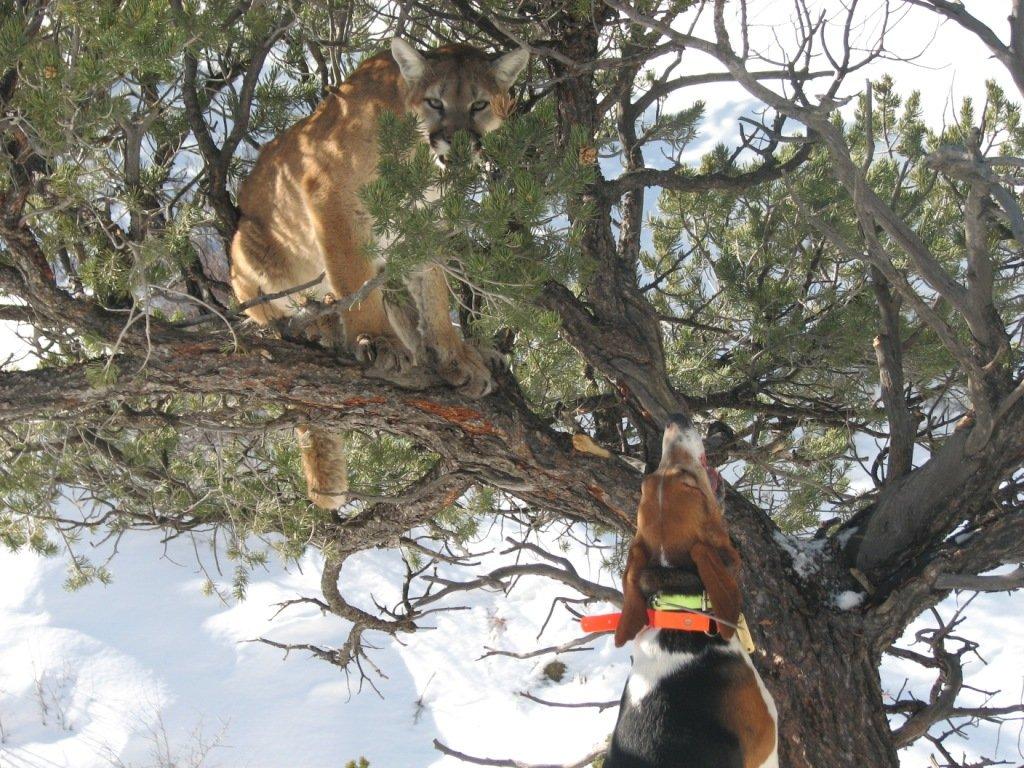
My hen decoy was set in a creek bottom that was skirted by a rocky ridge. As a fairly new western hunter at the time, it never dawned on me that a serenade of love-sick yelps could yield more than a strutting tom. But when I caught movement along the ridge some 50 yards away that caused the hair on my neck to stand, I knew something wasn't right. As I dissected the rocky outcropping with some glass a few minutes later and saw the pair of yellow eyes locked on my position, I knew the hunting roles had been reversed. When the eyes failed to flinch as I stood my six-and-a-half-foot frame from the tree and yelled a few choice words in his direction, I knew that I was in trouble. It wasn't until I fired a warning shot at the rocks below his hiding place that he was convinced to head elsewhere. Needless to say, I was relieved to see him effortlessly leap over the ridge in the opposite direction, but at the same time, I was intrigued by his presence. Thus began my obsession to chase a cat.
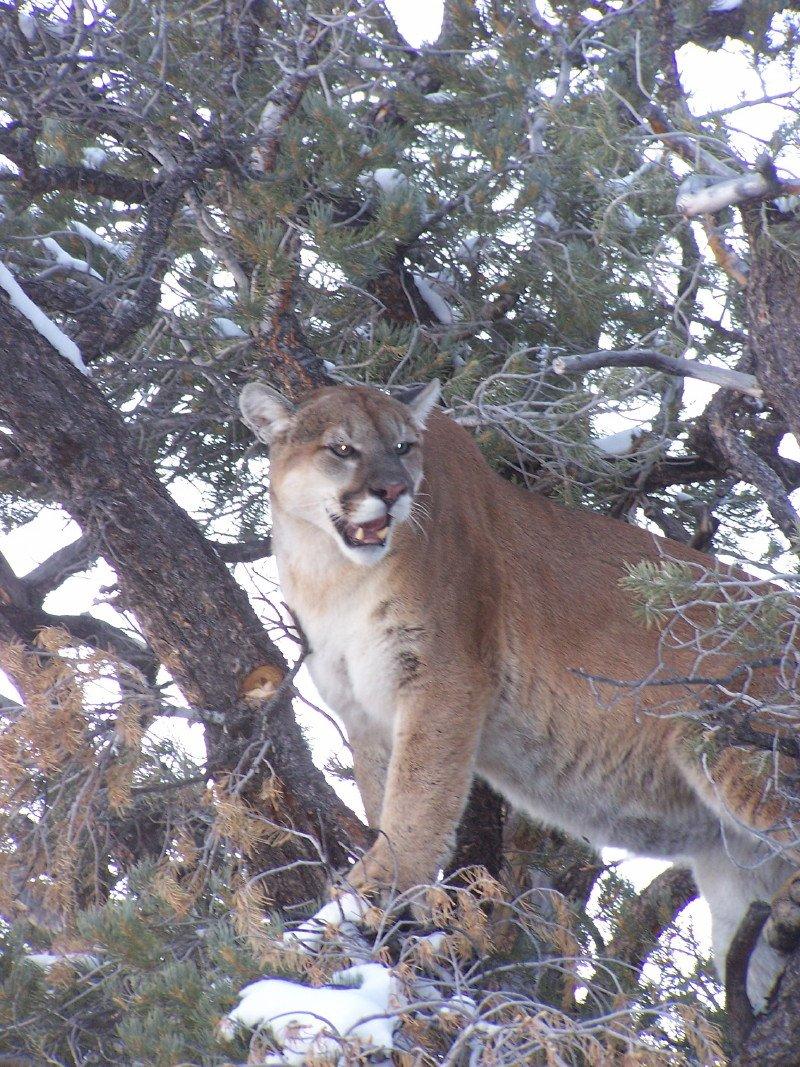
Three colorful blue-tick hounds jumped from the dog box and bounded across the fresh blanket of snow. As they ran around the truck throwing the powdered sugar-like snow in all directions, Dave studied the ground further and eventually grabbed his best hound and put him on the sharp-edged track. In an instant the business end of the hound went to work, and in no time he was off with the other two in tow. I listened with intensity as their energetic cries melted into the early dawn light of the ponderosa pine landscape. The chase was on!
WHERE TO GO

Since Colorado operates on a quota system, getting a tag is easy if the quota has not been filled in a particular area. That being said, quotas rarely are met during the lengthy season, which runs from mid-November to March 31st statewide. Hunters must take an online lion hunter education course. This course is to help would-be lion hunters better identify female lions. This effort is to encourage hunters to let the females walk so populations will continue to be strong for future hunters.
Colorado leads the west for overall trophy numbers, with more than 550 animals making the B&C and P&Y record books. Looking at numbers like this it's easy to see why Colorado should be at the top of any prudent lion hunter's hit list.
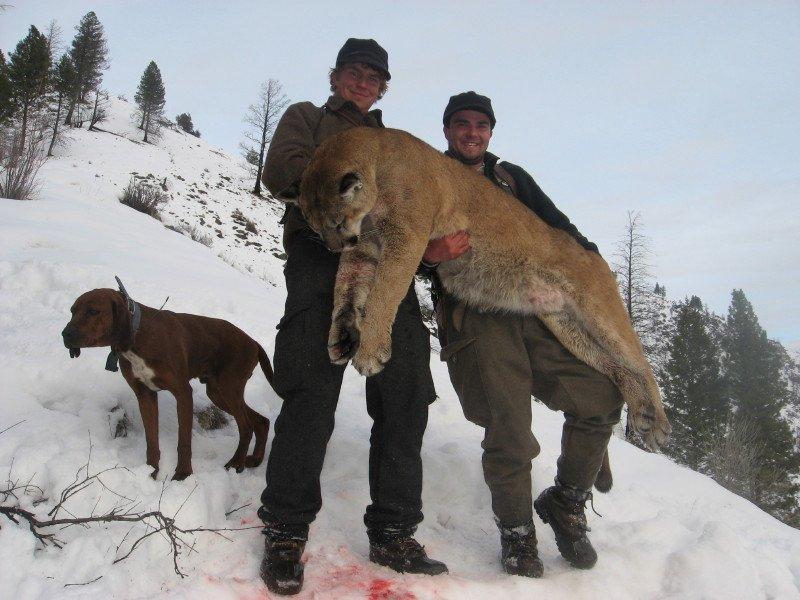
Population estimates hover around 2,000, with overall numbers stable in most areas. Your best bet for hanging a tag on a Gem State tom is in the Panhandle, Clearwater and Southwest regions, as nearly two-thirds of the harvest comes from these areas annually. And with their liberal season that lasts some six months, it's not hard to find the time to burn some boot leather.
Rounding out the top three trophy producers in the Lower 48 is Utah. More than 410 cats have made the record books with around 100 cats being Booners and more than 315 being P&Y candidates. Utah's top cat measured 16 inches and ranks in the top 10 in the all-time B&C record book. And unlike other states where you can pinpoint the regions of the state from which most of the trophy toms come from, they seem to be scattered across the state.
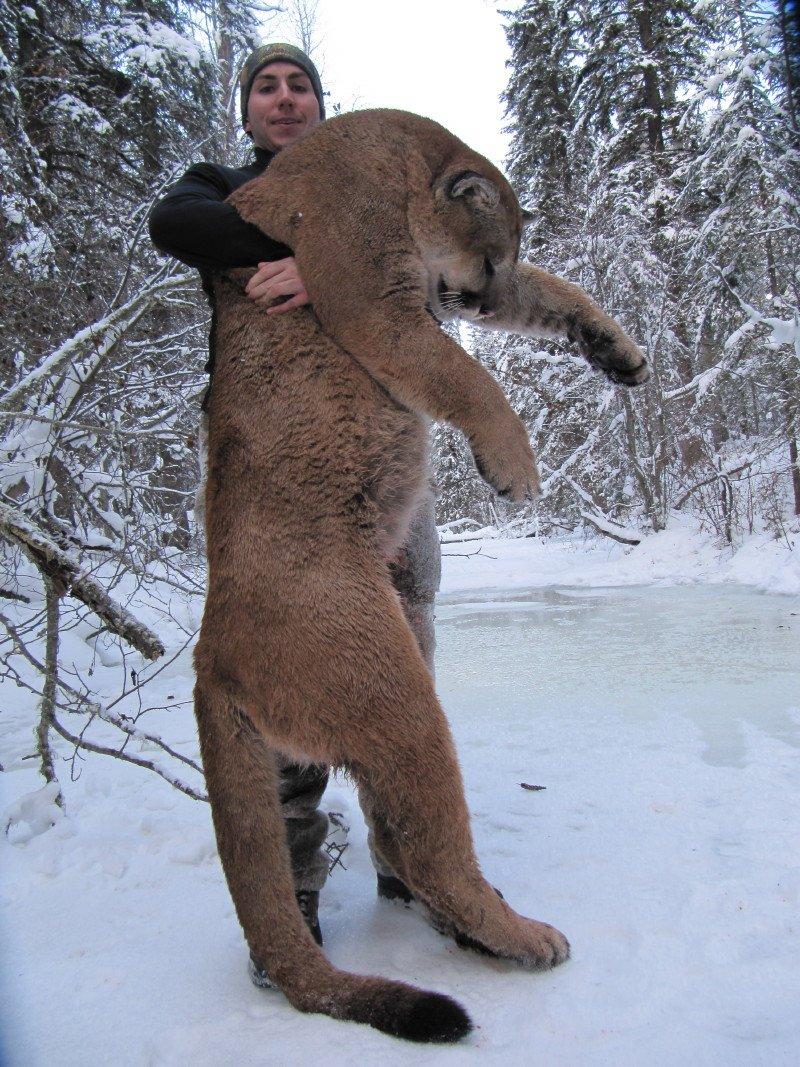
Don't just look to the Lower 48 to tag a head-heavy tom. British Columbia and Alberta also boost solid numbers of cats, and many experienced cat hunters feel it's hard to beat what these wilderness North Woods have to offer.
According to the 12th edition of the B&C record book, the top cat came from Tatlayoko Lake, B.C, and his head taped out at a whopping 16 4/16 inches. What's even more impressive is that five of the top 10 cats came from these Canadian provinces. No wonder hunters who head there usually come home with a tom for the record books.
MOMENT OF TRUTH
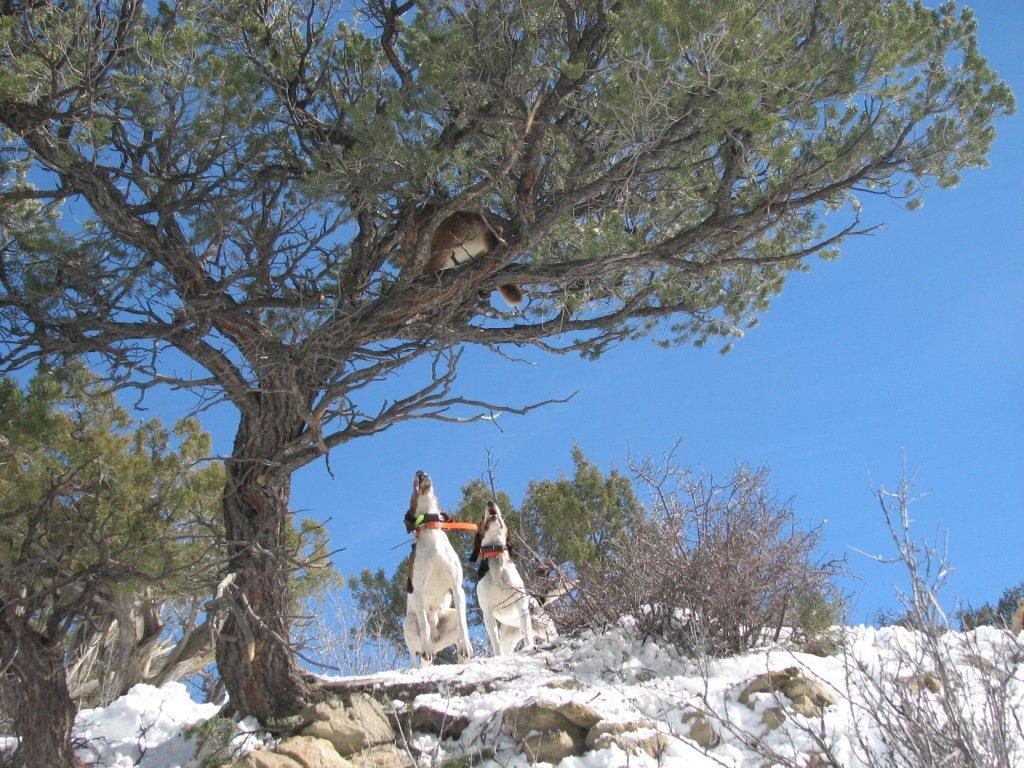
As the rhythm of bays and barks grew closer, my feet seemed to never hit the ground. Before I knew it I could see my feline prize angrily perched eight feet up in a cedar tree. From my position on the side hill, I was eye-to-eye with over 100 pounds of fur, teeth, claws and anger; I thought my heart was going to pound out of my chest. In an instant, my arrow ripped through his chest and he let out a seething hiss of discontent. Within seconds, his near lifeless body fell out of the tree and he bounded away only a few yards before expiring in a heap.
The ultimate thrill of the hunt wasn't the climatic release of the arrow; it was the whole process—the planning, the tracking, the chase, the sounds, the smells and the end result. Moments after the release I couldn't help but think about this cougar's wild and secretive nature. In admiration I knelt down and stroked his handsome tan coat and could see first-hand why the cougar is North America's most successful big game hunter.






